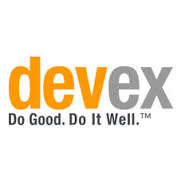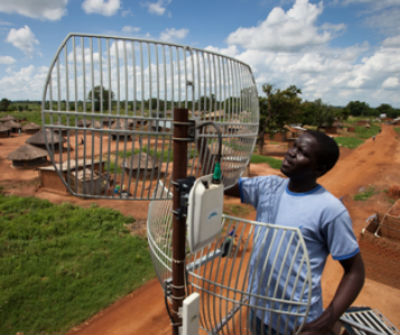Published at Deveximpact Online, September 17, 2013, Author: Michael Sweikar


Today businesses are increasingly involved in international development. This new involvement is visible at high-profile venues like the Clinton Global Initiative or the World Economic Forum, where companies present major social commitments, and at a quieter, more local level through country-based business roundtables where companies align their efforts around common development objectives.
While this trend toward private-sector partnerships is positive, there is one area in which this trend has not kept pace with another trend in international development – an increasing emphasis on rigorous monitoring and evaluation.
As described in Dean Karlan and Jacob Appel’s recent book, More Than Good Intentions: Improving the Ways the World’s Poor Borrow, Save, Farm, Learn, and Stay Healthy, randomized control trials can demonstrate that positive changes may result from development intervention, rather than from external factors alone.
rather than from external factors alone.
Although this type of experimental design has been used for more than 50 years, there has been renewed interest lately in using this form of validation to fund development projects. This is due in part to the limited resources available for funding projects, and the fact that researchers are finding new ways to use impact evaluation studies across varied disciplines.
It is difficult to find data on the number of companies that have measured the benefits of their corporate responsibility programs, and it’s difficult to determine if companies that do measure are assessing anything more than outputs.
For example, a 2011 survey conducted by the Corporate Responsibility Officers Association, Corporate Responsibility Magazine, and NYSE Euronext found that only 33 percent of the 300 global companies surveyed indicated that they measure the benefits of their corporate responsibility programs. And even when they do, it is not evident that they are measuring anything more than the numbers of individuals trained or workshops held.
So what can universities contribute to the task of evaluating and improving corporate partnerships for development?
First, by their very nature, universities are interested in learning and applying research. This means that universities can leverage existing expertise and infrastructure to develop an understanding of whether global development interventions are working or not.
And, secondly, because universities are naturally linked with research in the minds of many, companies may perceive universities as less “threatening” when it comes to having their programs evaluated. As many of my colleagues know, companies can perceive monitoring and evaluation as an intrusive “audit” that seeks to uncover flaws.
The fact is, companies are not always incentivized to integrate rigorous monitoring and evaluation components into their corporate responsibility programs. Shareholders may not be concerned with either process or results; implementing partners may not insist on a joint evaluation system, and the company itself may not want to fund the evaluation process.
When companies do set high standards for evaluating the benefits of their corporate responsibility programs, they are demonstrating leadership in an area where other companies may follow. These corporate leaders often find that a university makes a strong partner.
As director of the University of Notre Dame Initiative for Global Development, I’ve seen first-hand how universities can play a key role in enhancing the monitoring and evaluation components of these programs.
Take, for example, the Connectivity, Electricity, and Entrepreneurship partnership in northern Uganda partnership, which involves Accenture and the Accenture Foundations, HP and NDIGD.
The project aims to empower disconnected communities by providing solar panel microgrids to small businesses. These businesses not only use the energy to power their businesses but also resell the energy to others in the community, who can then start their own entrepreneurial businesses. The project also installs power-efficient computers connected to the Internet via a wireless network provided by nonprofit BOSCO Uganda.
NDIGD evaluation experts and Accenture employees will implement an evaluation plan to measure outcomes such as the performance of the microgrid and entrepreneurial training.
Performance of the microgrid will be measured by equipment that uploads information wirelessly to the Cloud, so that indicators are accessible in real time. These indicators will measure the use, intensity, and management of the electricity produced and will help optimize the ongoing design and use of the microgrid for the next phase of the project.
The entrepreneurial component will be evaluated through a difference-in-differences approach, with propensity score matching. Information has been collected on micro- and small businesses in areas where the pilot project is under way. Business data also will be collected annually to monitor economic activity in the area and to compare the outcomes of people who attend and graduate from the entrepreneurial program.
These participants will be part of a longitudinal data collection effort designed to measure the program’s impact on income and entrepreneurial activity. This aspect of the project reflects Accenture’s global corporate citizenship initiative, Skills to Succeed, which will equip 500,000 people globally by 2015 with the skills to get a job or build a business.
In another project funded by the Verizon Foundation, NDIGD monitoring and evaluation experts and the Ford Family Program in Human Development Studies and Solidarity at the Notre Dame Kellogg Institute for International Studies are conducting a randomized control trial to help determine the effectiveness of a mobile health project in Nnindye, Uganda. Using a RCT method, the evaluation process will test whether text messages increase health-seeking behavior.
Comparable data will be collected from similar “control” communities to ascertain the impact attributable to the project’s intervention. Data collected by the research team will help assess the impact of updated technology on health outcomes when health center workers are able to send electronic messages to remind women of prenatal and well-baby appointments or to spread the word when supplies such as anti-malarial bed nets or vaccines become available.
From these and other partnership experiences, NDIGD has learned five important lessons about monitoring and evaluating company-led partnerships.
1. Start at the design stage
Begin considering monitoring and evaluation in the initial stages of the project. Universities can be most useful in helping to develop research collaboration and systems for impact evaluation if they are brought in as a partner from the start.
2. Recognize the other partner’s expertise
Both company partners and university partners should be open to understanding the benefits that each brings to the table. Universities should be willing to help design the project so it can support both corporate responsibility goals and also longer-term business strategies of the company. In turn, companies should consider that including research and learning as part of their corporate program means the impact may affect not only beneficiaries but others who work in development and would benefit from research-based best practices.
3. Continue the dialogue
Keep communication channels open throughout project implementation. We have found that regular update calls work well, even when there is no big decision to make. In almost all environments where these types of projects are implemented, circumstances on the ground change rapidly and new obstacles to implement occur. Partners should go into the collaboration knowing that challenges will arise – and committed to find ways to work together to address them.
4. Focus on beneficiaries
Any research efforts and impact evaluations should aim to give a clearer picture of how the project has affected its intended beneficiaries. This data can be used as a resource when, during the course of the partnership, new decision points arise. At these moments, beneficiary-focused research can help company and university partners keep the initial goals of the project on track.
5. Look for opportunities to scale-up
The benefits of partnering include not only the expertise and resources of both sides, but also the opportunity to scale up successful projects. Look for ways to work together to take an initial pilot project to large scale, possibly through adding new partners and resources that both partners might be able to share. Always remember that a small increase in investment and scope to prepare for scale-up at the pilot stage can reap huge rewards when scaling occurs.
As corporations increasingly make a greater effort to improve health, education, gender equality, and employment in developing countries, it’s important that they identify ways to measure how effectively their time and resources are being spent. Leveraging university expertise in monitoring and evaluation as a component of project design and implementation can contribute to better outcomes.
Contact: Michael Sweikar, NDIGD Managing Director msweikar@nd.edu